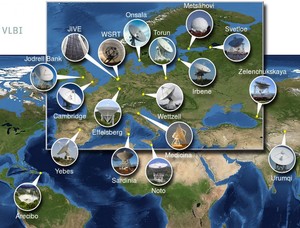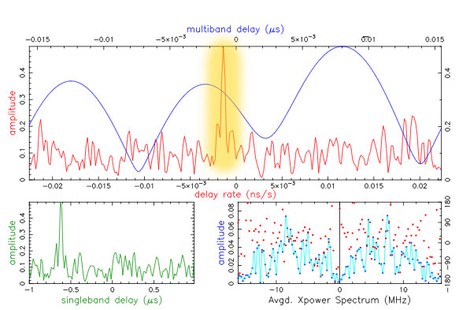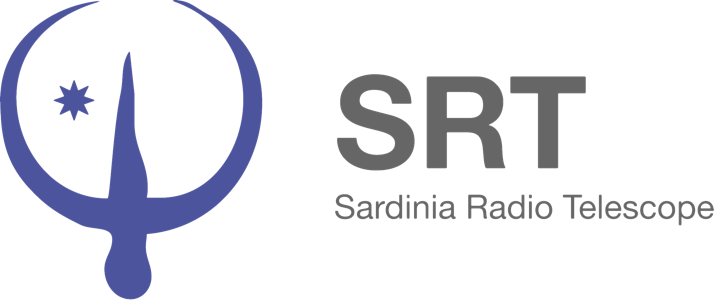Astronomers
SRT in the VLBI networks
EUROPEAN VLBI NETWORK
Since June 2014 the Sardinia Radio Telescope regularly participates in the European VLBI Network (EVN) observations. The EVN is a network of radio telescopes in Europe and beyond, operated by an international Consortium of institutes among which the Istituto Nazionale di Astrofisica (INAF), that uses a peculiar technique called the Very Long Baseline Interferometry (VLBI). The data recorded at each radio telescopes, also called simply stations, are sent for correlation to the Joint Institute for VLBI ERIC (JIVE) in Dwingeloo (The Netherlands). This observational technique permits to reach angular resolution of fraction of milli arcsecond depending on the configuration and on the frequency chosen. For more information on the EVN and JIVE see the following links:
On the 20th of February 2014, during one of the ftp-fringe tests made regularly during each observation sessions (three sessions a year), the first interferometric fringe at L-band (1634.49 MHz-1682.49 MHz) was detected between the Sardinia Radio Telescope and the other EVN stations. Few weeks after (March 11, 2014) a similar successful result was obtained at K-band (22187.49 MHz-22283.49MHz). These brought the Sardinia Radio Telescope to officially join the scientific observations in the second session of 2014 (from 29th May to 19th June 2014) both in L- and K-band.
On the 12th of June 2014 the first fringes at M-band (6661.49MHz-6673.49MHz) were observed, making the Sardinia Radio Telescope also available for radio interferometric Science at the high frequency range of the C-band (called Methanol-band or M-band in honor of the main methanol maser transition at 6.7 GHz).
 |
The Western Configuration of the European VLBI Network. The position of the correlator at JIVE is also shown. Credits: Paul Boven. Satellite Image: Blue Marble Next Generation, courtesy of Nasa Visible Earth. |
SPACE-VLBI
Since June 2014 the Sardinia Radio Telescope partecipates also to Space-VLBI observations with the space radio telescope RadioAstron. The RadioAstron is an international space VLBI project led by the Astro Space Center of Lebedev Physical Institute in Moscow (Russia) that permits angular resolutions of microarcseconds. More information can be found here:
http://www.asc.rssi.ru/radioastron/
ITALIAN VLBI
The Sardinia Radio Telescope together with the other two Italian radio telescopes of Medicina and Noto will create the Italian VLBI (I-VLBI). The first succesful tests and observations (January 27, 2014) have already been made at K-band. The recorded data are sent to the Istituto di Radio Astronomia (IRA) in Bologna and correlated using the Bologna Correlator based on DFIX correlator.
 |
The very first interferometric fringe (highlighted in yellow) between the Sardinia Radio Telescope and the Medicina antenna obtained during an Italian test on January 27, 2014. |
COLLABORATIONS WITH OTHER NETWORKS
Some international collaborations between the three Italian radio telescopes and others VLBI networks started: with the Japanese VERA array (Feb-2015, K-band), with the Korean VLBI Network (Oct-2015, K-band), with the Chinese Tianma 65-metre antenna (Aug-2016, K-band). The data were correlated using the Bologna Correlator.
